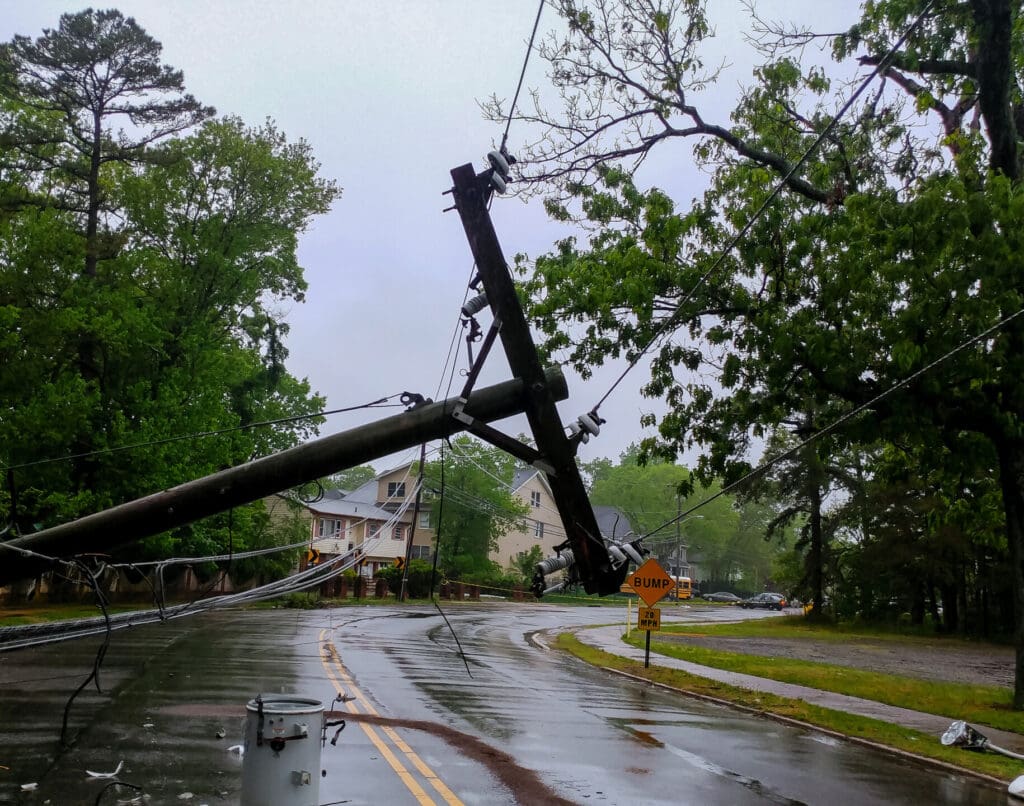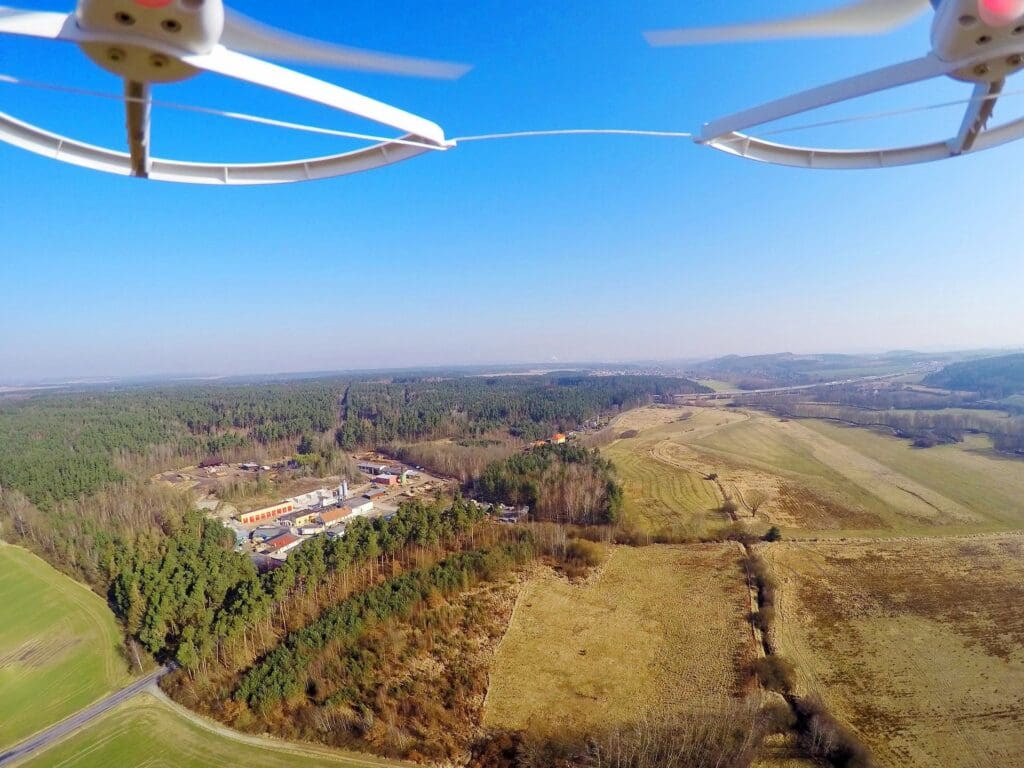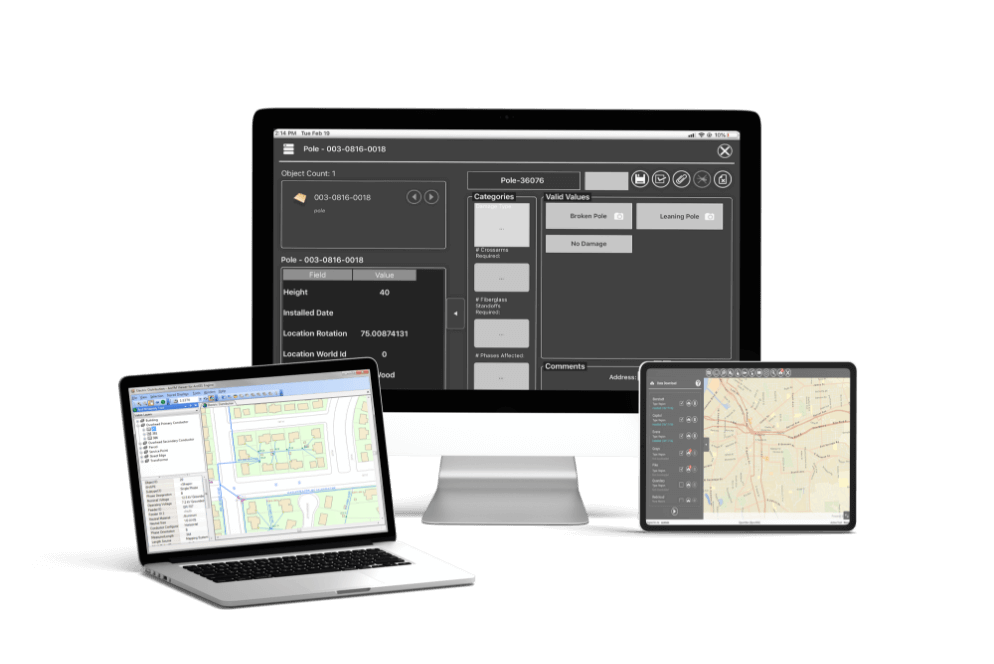Managing utility field services is a highly complex endeavor. Coordinating field crew workers and equipment across the vast service areas both electric and gas utilities support require teams of administrators, timely access to field data, volumes of paperwork, and the industry’s most advanced high-performance computing systems. While routine inspections and maintenance work can be planned in advance, outages occur unpredictably, disrupting field crew operations and impacting the lives and businesses of customers throughout the community.
So, what are the greatest challenges facing utility field services administrators today, and how can an investment in new, emerging utility field service software help them better ensure service uptime?

For decades, utilities have relied largely on manual processes to collect data in the field, transfer it into central databases, and put together work orders, dispatching instructions, and master schedules for their field operations. For many utilities today, these labor-intensive processes are no longer sustainable. As populations increase, infrastructure assets age, and regulatory standards become more stringent, utilities must leverage geospatial information systems and automated workflows to keep pace with advancing field asset management and operational demands.


In the era of climate change, weather-related events, such as wildfires, hurricanes, and floods are becoming more common. When these events occur, widespread service disruptions can persist for days – and even weeks, crippling local economies and throwing utility field service management operations into a state of chaos.
Even smaller outages, or short-cycle work, can impact customers dramatically. Planned service outages – and unexpected mishaps, such as when a worker accidentally cuts a line in the street – can leave individual customers or groups of customers without the energy resources they need to go about their daily business.
To mitigate the impact of outages, utility companies need greater, faster access to geospatial data throughout their service areas. And they need advanced workflow automation tools to dispatch the right crews to locales in need, on demand. Ultimately, real-time situational awareness and intelligent, automated workflows are essential today to assess the condition of assets, expedite infrastructure repairs, and restore service to customers in need as quickly as possible.
The nation’s network of utility company pipelines, powerlines, and other infrastructure assets extends across a patchwork of urban, rural, and mountainous regions that are often covered with fast-growing vegetation. Certain areas, especially across Western states, experience extremely hot, dry conditions that make them vulnerable to damaging wildfires. To mitigate the effects of unchecked vegetation growth, utility companies must have in place advanced geospatial mapping technologies to obtain the ongoing surveillance data they need on wooded and forested areas.


With field crews working across thousands of miles of infrastructure day in and day out, the sheer amount of data flowing back to a utility’s home-office teams can be overwhelming. Digitizing, standardizing, and distilling all this data is highly labor intensive if done manually – so much so, that by the time data gets processed it is often outdated.
Consider also the proliferation of drones, LiDAR systems, and other sources of aerial imagery that are increasingly informing field crew operations today. To fully optimize all the geospatial data available to them, utility companies must make continuous improvements to their infrastructure to enable real-time data access, high-performance computing, and seamless integration across the geographic information systems involved in their field operations.
From a regulatory standpoint, utility companies operate in challenging times. To continue to promote safer, more sustainable energy delivery to consumers, environmental regulations are becoming much stricter. Utilities today need to demonstrate that they are adhering to these new, higher standards by capturing and reporting data in an increasingly granular manner.
From a business standpoint, the reporting needs of utilities are increasing as well. To fully optimize their workforce and field assets, metrics on outages must be reported in real time, including how long groups of customers have remained without power, what resources are needed to address an outage, and how long it will take to restore power. Other short-cycle work, such as meter replacements and inspections, need to be tracked and reported on as well. And utilities also must track the energy usage of customers and report this data back to them.
Going forward, utility companies will implement advanced geospatial mapping and workflow automation technologies to enable the broad, real-time data access, tracking, and tracing they need to understand and report on their operational performance and the status of conditions in the field.


Customers today are used to doing business with the likes of Amazon and Apple, and they expect the same type of seamless consumer experiences from utility companies. This means they have no patience any longer to wait around for service calls. They want to know exactly where a field crew is on its route, when crews are expected to arrive on site, and how long the service call is going to take once they begin work.
When workers arrive on site, they must have all the information needed to complete the job – even if they are in a remote area without Internet access. If crews have to call back to administrators for details and this causes unnecessary delays, that is not a good experience for today’s digital-first consumer – and overall sentiment toward the utility company will reflect this.
To meet the high digital expectations of consumers requires the utility to have a depth of real-time data synched across all field operations systems and devices – from smartphones and tablets used by field crews on site to back-end servers and cloud-based GIS and business applications driving workflows.
Help your team navigate its mobile workforce digitization journey with our guide, “Overcoming 5 Barriers in Field Operations”.
Automation of processes and workflows must be achieved for utilities to maintain their high service levels amid these and other industry challenges. With a customizable advanced workforce automation software solution, utilities can replace many of the manual processes that are slowing their productivity with automated systems designed to perform the same tasks faster and more cost-efficiently.
For example, modern utility workflow automation solutions can automatically track the daily whereabouts and availability of field crew workers and equipment in a given service area and fine tune the master schedule accordingly. They can automatically track and trace the progress of long- and short-cycle work across a service area and feed that data into the scheduling engine as well.
The most advanced automated workflow applications both drive scheduling processes and enable real-time route optimization for crews so field workers are automatically notified of their assignments by email, including where and when to report for a job, what equipment is needed, and the best route to get there.
For utility companies today, data is collected, accessed, and shared across geographic information systems in a range of formats – from hand-drawn diagrams, maps, and notes recorded in field crew notebooks to satellite imagery and online forms that must be completed and imported into field asset management systems.
Fortunately, new geospatial mapping technologies are fast emerging, empowering utilities with the tools they need to capture and synthesize all field data automatically and then display it for viewing and analysis via highly visual, digital map-based applications and dashboards.
Designed for ease of use, these types of dynamically updated dashboards allow operations management teams to drill down and view the full production and maintenance history of an asset throughout its lifecycle. With all this granular information stored and accessible through one universal interface, maintenance and repair tasks that are needed, such as meter replacements and other infrastructure upgrades, can be pinpointed quickly, and proactively planned, tracked, and completed, making the best use of field crew personnel, vehicles, and equipment.
And when customers request a service call – or an unexpected outage diverts a field crew from its regularly scheduled work – the most sophisticated map-based interfaces today feature simple-to-use touchscreens. These highly visual systems allow field operations management teams to simply click on the map’s icon that represents the field crew to be reassigned and drag that icon to the exact location of the new assignment. This data is then automatically fed into the scheduling engine, which processes it and generates the dispatching instructions accordingly. See EpochField Scheduler in Action.
Field crews serve as a utility’s eyes and ears across their service areas, gaining firsthand knowledge of how assets are performing – and direct input from customers on their service needs as well. When equipped with the ability to collect all their data digitally and communicate easily with back-office teams via their own mobile devices, field crews can get the job done much faster and more reliably.
New, advanced mobile workforce management platforms are allowing field crews to do just that. Featuring intuitive, downloadable apps designed to operate with any smart device, these solutions make it easy and fast for field crews to enter notes, fill out forms, and capture imagery from their smartphones and transfer that data back to the home office using a standard Internet connection. In replacing manual field operations processes with mobile innovation, utilities can eliminate several steps in the data collection and processing workflow, for better collaboration and productivity across teams, greater cost savings, and safer, more sustainable operations.
While there are many digitization technologies on the market that streamline specific aspects of a process or workflow, implementing point solutions from multiple vendors can create problematic complexities and bottlenecks within your infrastructure. When planning technological upgrades across your operations management systems, the optimum approach instead is a holistic one.
To meet the industry’s advancing demands now and in the future, a platform-level digitization and geospatial mapping solution will provide the seamless integration across data, systems, applications, and users needed to truly unleash the power of field data and enable automated workflows and processes enterprise-wide.
With a feature-rich digitization platform implemented, utility companies can synch and share real-time field data across both GIS solutions and business applications such as Oracle and SAP. With this depth of field data recorded digitally and stored in a central database, it is easily accessed for regulatory and operational reporting purposes as well.
And because these systems dynamically update, all stakeholders, from the back office to the field, have the same, updated view of real-time operational data at their fingertips. Having this level of infrastructure in place enables better collaboration between field crews and back-office teams, helps utilities better inform customers on the status of any service work in progress, and allows scheduling and crew dispatching decisions to be made with all relevant data factored in, including which workers are full time, which are part-time, where they are located at any given time, who is out sick or on vacation, and what skills each crew member brings to the job at hand.
Learn how automated work scheduling software can be the solution in our guide, “Working Faster & Smarter: A Guide to Automated Field Crew Scheduling”.
The utility industry is at an inflection point today. While utility companies are embracing new, emerging technologies to manage their field operations, the question remains: Is this digital transformation happening fast enough?
In the coming months and years, some 50% of the industry’s workforce is set to retire – and not enough younger workers are getting educated and trained in the right disciplines to fill this gap.
This inevitable loss of personnel resources must be replaced with digital technologies that can both capture the institutional knowledge these senior-level employees bring to the job currently – and handle a breadth of tasks via automated workflows to keep utility assets operating at optimum levels going forward.


Investments made today must lay the foundation for deploying future technologies as well, including intelligent platforms built around AI and machine learning that will enable predictive modeling on everything from where outages are likely to occur and where repairs and maintenance services are needed to how to get better performance out of field crews, equipment, and infrastructure assets.
Ultimately, partnering with industry experts – and implementing an advanced, highly-configurable platform-level geospatial mapping solution – will serve utility companies and their customers well for years to come, unlocking efficiencies through digitization and automation, delivering cost savings, helping utilities troubleshoot issues before they occur, and keeping them in compliance with important safety and sustainability laws designed to protect lives, property, structures, and the environment.
As with any large technological initiative, choosing the right industry partner when implementing a geospatial data management platform is key to your success.
Since 2006, utility companies have relied on Epoch Solutions Group to transform their field service operations by leveraging advanced geospatial and workflow automation technologies. Today, our mobile-first geospatial solutions automate operational workflows, thereby simplifying the work of field crews and back-office teams alike.

As our flagship solution, the EpochField platform delivers map-centric features and an intuitive user interface that make it easy for utility employees to apply geospatial data as they manage the full complexities of their field operations. Built on advanced business process automation technology, EpochField combines a powerful back-office scheduler with work type authoring and work order creation applications to help utility personnel create, streamline, and manage their asset workflows.
Fully customizable, EpochField can be implemented in the exact configuration your utility company needs to optimize all your resources, expedite response times, and deliver the reliable service your customers expect and deserve. Let us help you meet the future head on.